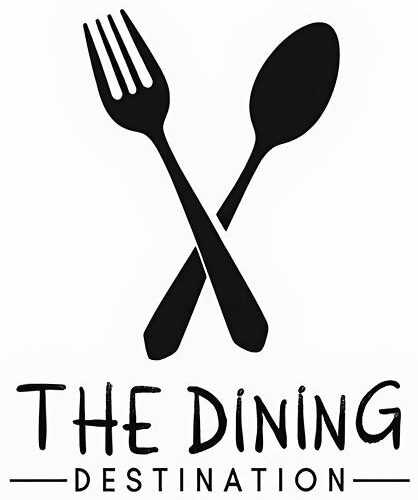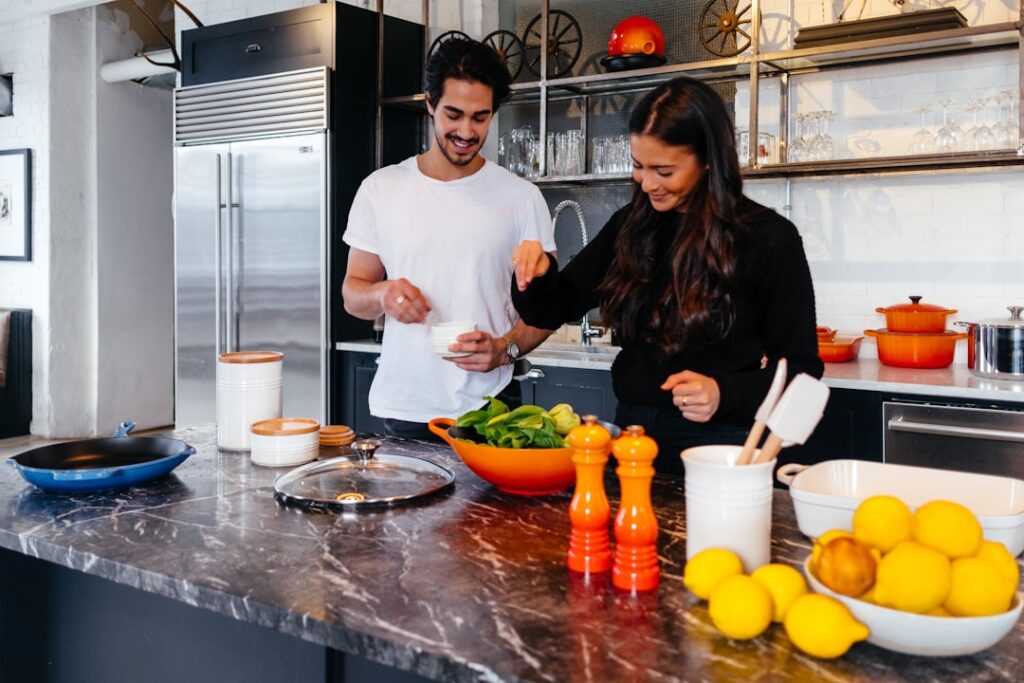Find the Joy of Local Culinary Learning
Remember the first time you successfully cooked something that made everyone at the table smile? That feeling of pride and accomplishment is exactly what local cooking classes offer—but with expert guidance to ensure your culinary creations turn out even better than expected.
As Julia Child wisely noted, “People who love to eat are always the best people.” This couldn’t be more true in the warm, flour-dusted atmosphere of a cooking class, where food enthusiasts gather not just to learn recipes but to share stories, laugh over cooking mishaps, and connect through the universal language of food.
Local cooking classes are hands-on culinary experiences led by professional chefs or talented home cooks who are passionate about sharing their knowledge. These classes transform cooking from a daily chore into an trip—whether you’re learning to roll sushi, knead bread dough, or master the perfect sear on a steak.
| What Are Local Cooking Classes? | Where to Find Them | Average Cost | Class Duration |
|---|---|---|---|
| Hands-on culinary lessons taught by professional chefs or experienced home cooks | Community colleges, gourmet stores, restaurants, libraries, specialized cooking schools | $59-$100+ per person | 2-3 hours typically |
The global appetite for these experiences is enormous. The culinary tourism market currently sits at a hearty US$1 trillion in 2024 and is expected to grow to almost US$3 trillion by 2032. This isn’t just about learning to cook—it’s about experiencing culture through food. More than half of leisure travelers (53%) now identify as food travelers, seeking authentic tastes and techniques that connect them to local traditions.
Classes come in various flavors to suit different tastes and learning styles. You might find yourself rolling up your sleeves for a hands-on pasta workshop, watching attentively during a demonstration-style pastry class, or wandering through local markets with a chef before creating a meal with your fresh finds. Some focus on specific skills like knife techniques, while others celebrate regional cuisines or dietary preferences like plant-based cooking.
Beyond the immediate joy of creating (and eating!) delicious food, these classes contribute significantly to local economies and help preserve culinary heritage. Did you know that certified culinary tourist guides can boost a destination’s economic benefit by up to 25%? That’s the power of food tourism—it nourishes both visitors and communities.
Whether you’re a kitchen novice or a confident home cook looking to expand your repertoire, local cooking classes offer something truly special: the chance to learn, create, and connect through the simple joy of making good food together.

What Are Local Cooking Classes? A Whisk-Quick Definition
Ever wondered what happens when you mix equal parts learning, eating, and socializing? You get local cooking classes – interactive culinary experiences where you’ll learn to prepare delicious dishes under the guidance of experienced instructors. Unlike passively watching cooking shows or scrolling through recipes online, these classes put you right in the action with real-time feedback in a supportive community setting.
These classes come in several delicious varieties. The most popular are hands-on sessions where you’ll actually chop, stir, and sauté yourself. If you prefer to observe before diving in, demonstration classes let you watch a chef work their magic up close before you taste the results. Many venues cleverly combine both approaches, letting you see a technique before trying it yourself.
As one Bangkok cooking school enthusiastically promises: “Cook with us and you will experience cooking as a fun, easy and wonderful hands-on experience!” This perfectly captures what makes local cooking classes special – they transform seemingly intimidating culinary techniques into approachable, enjoyable activities that anyone can master.
Types of Local Cooking Classes Near You
The menu of local cooking classes available today is truly impressive, with options to satisfy virtually every culinary curiosity:

Cuisine-specific classes transport you around the world through food, from mastering authentic Thai curries to rolling traditional Italian pasta by hand. In cities like New York, you can learn everything from crafting perfect dim sum to the secrets of authentic New York-style pizza in a single weekend.
Skill-building workshops focus on fundamental techniques that transform your everyday cooking. “The knife skills class completely changed how I approach meal prep—I’m twice as fast now!” shared one enthusiastic participant. These targeted sessions help you master essentials like bread baking or creating the perfect sauce.
For those with specific interests, specialty classes cover everything from artisanal cheese-making to chocolate work, sushi rolling, and plant-based cooking. Many venues also offer age-specific programs like kids’ cooking camps or adult-only sessions custom to different skill levels.
Looking for a unique date night? Couples classes encourage collaboration and create memorable shared experiences. As one Sur La Table participant described their evening: “a truly enchanting and flavorful journey” – much more memorable than the standard dinner and movie!
Special Formats Beyond the Classroom
Today’s cooking experiences aren’t limited to traditional classroom settings – they’re breaking new ground in delicious ways:
Market-to-table experiences begin with guided tours of local farmers’ markets or food halls, where instructors show you how to select the freshest ingredients before heading to the kitchen. In Bangkok, for example, classes often start with fascinating tours of wet markets where participants learn about exotic Thai ingredients before cooking with them.
The pandemic sparked a boom in virtual cooking classes, which continue to thrive by offering accessibility to those who can’t attend in-person. These online sessions allow you to learn from home while still receiving real-time guidance from professional chefs.
For a more personalized experience, in-home chef experiences bring professional instructors to your kitchen, allowing you to learn techniques using your own equipment – perfect for mastering your specific cooking setup.
For the ultimate food trip, culinary retreats offer immersive multi-day experiences combining cooking instruction with cultural tours, wine tastings, and other food-related activities.
One participant in a Palermo cooking class shared: “Learning to make traditional arancina in a local Sicilian ‘Mamma’s’ kitchen was the highlight of our trip. We not only learned authentic techniques but also stories about how these recipes have been passed down through generations.”
This blend of culinary skill-building and cultural connection is exactly what makes local cooking classes so much more than just cooking lessons – they’re doorways to understanding people and places through the universal language of food.
Why Enroll? The Proven Benefits of Local Cooking Classes
Beyond learning to create delicious meals, local cooking classes offer a multitude of benefits that extend well beyond the kitchen.
When you step into a cooking class, you’re not just picking up recipes—you’re gaining valuable skills that last a lifetime. Whether you’re learning to perfectly dice an onion or master the delicate art of French pastry, these classes provide hands-on guidance that simply can’t be matched by watching videos or reading cookbooks. The immediate feedback from instructors helps you correct techniques on the spot, accelerating your culinary journey.
The social aspect of cooking classes often comes as a delightful surprise to first-time participants. In our increasingly digital world, these classes offer genuine face-to-face connections built around a shared passion for food.
“I’ve made some of my closest friends through weekend cooking classes,” shared one regular attendee in Orlando. “There’s something about creating food together that breaks down barriers and creates instant connections.”
Cultural immersion through cooking is perhaps one of the most enriching benefits. As Erik Wolf, Executive Director of the World Food Travel Association, beautifully puts it, food tourism is “the act of traveling for a taste of place in order to get a sense of place.” Local cooking classes provide an intimate window into cultural traditions that no guidebook could ever capture. Learning to make authentic pad thai in Bangkok or traditional pasta in Sicily reveals stories, techniques, and flavors passed down through generations.

The mental health benefits of cooking classes shouldn’t be underestimated either. Scientific research has shown that culinary activities can significantly boost mood and provide a genuine sense of accomplishment. Cooking engages all your senses and requires present-moment focus—essentially a form of mindfulness that can reduce stress and anxiety. The rhythmic chopping, the aromatic ingredients, the tactile experience of kneading dough—all combine to create a deeply grounding experience.
Perhaps the most lasting benefit is the confidence that blooms in the kitchen and beyond. Many participants report that mastering new recipes in a supportive environment empowers them to experiment more freely at home.
“Before taking classes, I strictly followed recipes to the letter,” explained a New York City class participant. “Now I understand the ‘why’ behind cooking techniques and feel comfortable improvising with whatever ingredients I have on hand.”
From Solo Traveler to Team Player
Local cooking classes have become popular venues for team-building activities, and for good reason. Cooking together naturally fosters communication, collaboration, and creative problem-solving—skills that translate directly to the workplace.
Corporate teams find particular value in these culinary trips. The kitchen becomes a natural ice-breaker, where conversations flow as easily as olive oil. Participants naturally gravitate toward different aspects of meal preparation based on their strengths, creating organic role flexibility. Unlike many team-building exercises that feel contrived, cooking produces tangible (and delicious) results that everyone can enjoy together. For international companies, cuisine classes can foster appreciation for diversity and cross-cultural understanding.
“Our corporate cooking event provided a flavorful platform for professional growth,” noted one HR director after organizing a team class. “We saw colleagues who rarely interact at the office collaborating effortlessly over simmering pots. The hierarchy disappeared—everyone was just a cook in the kitchen.”
Taste the Culture, Support the Community
When you participate in local cooking classes, you’re not just learning new skills—you’re actively supporting the local economy and helping preserve culinary heritage.
Cooking schools typically source ingredients from local farmers and markets, creating positive economic ripple effects throughout the community. According to the World Food Travel Association, certified culinary tourist guides can add up to 25% economic benefit for a destination—a significant impact from simply learning to cook!
Many classes highlight sustainable practices, teaching participants about locally sourced ingredients and traditional preservation techniques. This education helps preserve cultural food knowledge that might otherwise be lost in our world of convenience foods.
In places like Thailand’s Klong Toey neighborhood, cooking schools such as “Cooking with Poo & Friends” provide economic opportunities for community members while offering visitors authentic cultural experiences. These social enterprises demonstrate how culinary tourism can be a powerful force for positive change, creating sustainable livelihoods while celebrating local food traditions.
The joy of cooking classes lies not just in the skills you gain, but in the connections you make—to other people, to different cultures, and to the communities that welcome you to their tables.
How to Choose the Right Class for Your Taste, Budget & Diet
Selecting the perfect local cooking class feels a bit like picking the right ingredient for a cherished recipe—it can make all the difference in your experience. Let’s break down what matters most when you’re shopping for culinary education.
First, consider what cuisine speaks to your soul. Are you dreaming of rolling perfect sushi? Yearning to master authentic Italian pasta from scratch? Or perhaps you’re simply looking to build your fundamental cooking skills? New York City’s culinary landscape offers extraordinary diversity—from dim sum workshops that reveal the secrets of perfect dumplings to classes where you’ll learn to craft the quintessential New York pizza.
“I signed up for a Thai cooking class thinking I’d learn to make pad thai, but ended up falling in love with curry pastes made from scratch,” shares Melissa, a cooking class enthusiast from Brooklyn. “Sometimes the best experiences come from trying something completely new.”
Skill level matters tremendously. Nothing dampens culinary enthusiasm faster than feeling completely lost—or conversely, being bored by basics you’ve already mastered. Look for clear descriptions in class listings, such as “suitable for all levels” or “intermediate to advanced.” Many schools offer progressive series, allowing you to build skills systematically.

Who’s teaching matters too. Some classes feature professionally trained chefs with restaurant experience, while others showcase talented home cooks with generations of family recipes. Both can offer remarkable experiences, but knowing who’s at the helm helps set appropriate expectations. Don’t hesitate to ask about an instructor’s background—most cooking schools are happy to share their teachers’ credentials.
Class size dramatically shapes your experience. In smaller groups (typically 8-12 people), you’ll receive more personalized attention and hands-on guidance. Larger classes often create a livelier social atmosphere but might offer less one-on-one instruction. Consider your learning style when making this choice.
Never underestimate the value of reviews and recommendations. A quick online search for reviews can reveal insights that official descriptions might miss. “Reading reviews helped me find a sushi-making class where the instructor was particularly patient with beginners,” notes James, a first-time cooking class participant. “That detail made all the difference for me.”
For many of us, dietary needs are non-negotiable. The good news is that cooking schools increasingly accommodate various requirements. Many now offer vegetarian, vegan, gluten-free, kosher, halal, and allergen-free options. The key is communication—reach out before booking to discuss your specific needs. As one cooking school operator told us, “We can accommodate most dietary restrictions with advance notice, but it’s important to communicate these needs when booking.”
Budgeting for Local Cooking Classes
When it comes to local cooking classes, prices typically range from $59 to well over $100 per person. Understanding what influences these prices can help you find the best value for your culinary dollar.
Different formats command different price points. Demonstration classes, where you watch and learn before tasting, typically cost less ($50-75) than hands-on sessions where you do the cooking yourself ($75-125). Private lessons offer personalized attention but come with higher price tags ($150-300+). Market tours combined with cooking classes ($100-200) provide a comprehensive experience that often justifies their premium pricing.
Here’s what you can typically expect to be included:
| Class Type | Average Price Range | What’s Typically Included |
|---|---|---|
| Group demonstration | $50-75 | Recipe handouts, tastings, sometimes a glass of wine |
| Hands-on group class | $75-125 | All ingredients, equipment use, full meal, recipes to take home |
| Private lessons | $150-300+ | Personalized instruction, custom menu, all ingredients, sometimes wine pairings |
| Market tour + cooking | $100-200 | Market guidance, transportation, ingredients, full cooking class |
Most classes include all necessary ingredients, equipment use, and recipes to take home. Some venues sweeten the deal with beverage pairings—a glass of Chianti with your homemade pasta or sake with your sushi can lift the entire experience.
When comparing prices, consider the class duration—a comprehensive three-hour session might offer better value than a shorter class at a similar price point. Also, specialty classes featuring premium ingredients (like truffle workshops or seafood classes) naturally command higher prices.
Don’t forget about gift cards! Many cooking schools offer them, making classes perfect presents for food-loving friends and family. “Our gift cards never expire and can be used toward any of our online or in-store cooking classes,” notes one popular cooking school’s website.
Finding Classes in Your Area
Finding local cooking classes near you is a bit like finding a hidden restaurant gem—it takes some exploration, but the rewards are delicious.
Community colleges and continuing education programs often offer affordable cooking classes taught by qualified instructors. These typically run in multi-week series rather than one-off sessions, allowing for deeper skill development. Check your local college’s extension or continuing education catalog.
Your public library might surprise you. Libraries increasingly host free or low-cost cooking demonstrations as part of their community programming. “Your Orange County Library card gives you access to check out way more than the latest best seller,” shared one Orlando resident who finded pasta-making classes through her local branch.
Specialty cooking stores like Sur La Table have built-in test kitchens where they regularly host classes. These range from basic skills to advanced techniques, often with seasonal themes that highlight fresh, local ingredients.
Many restaurants and gourmet food shops offer classes as a way to connect with customers and showcase their expertise. These provide the unique advantage of learning in professional kitchens, often from the very chefs whose food you’ve enjoyed as a dining patron.
The digital world offers plenty of options too. Online platforms like Cozymeal, Airbnb Experiences, and EatWith connect local instructors with interested students, often providing vetted reviews and secure booking.
Social media community groups frequently share information about pop-up classes and underground supper clubs with educational components. Join neighborhood groups on Facebook or follow local food hashtags on Instagram to find these opportunities.
Don’t overlook tourist boards and visitor centers. While they maintain listings primarily aimed at visitors, these resources are equally valuable for locals seeking culinary trips in their own backyard.
And finally, word of mouth remains surprisingly powerful in the digital age. Ask friends, neighbors, and local food enthusiasts for recommendations—personal experiences often lead to the most memorable classes.
Here in New York City, we at The Dining Destination have noticed a beautiful trend of neighborhood-specific cooking classes that highlight local food traditions from the city’s incredibly diverse communities—from Jamaican cooking in Crown Heights to Italian classics in the Bronx’s Arthur Avenue.
What Happens During a Typical Class Day?
Walking into a local cooking class for the first time can feel both exciting and a little nerve-wracking. Knowing what to expect helps you arrive confident and ready to make the most of your culinary trip.
While every class has its own unique flavor, most follow a similar recipe for success:
The experience typically begins with a warm welcome and introductions (10-15 minutes). Your instructor will share their culinary background, outline the day’s menu, and cover essential safety tips. This is when participants often share their own cooking experience and what brought them to the class. It’s a friendly ice-breaker that sets the tone for the day.
Next comes the recipe overview (10-15 minutes), where the instructor walks through the dishes you’ll be creating. They’ll highlight key techniques and special ingredients you might not be familiar with. This is your golden opportunity to ask about possible substitutions or modifications if you have specific dietary needs.

The heart of any local cooking class is, of course, the hands-on preparation and cooking (60-90 minutes). In participatory classes, you’ll work at your own station—either individually or with a partner—following the instructor’s guidance. If you’re in a demonstration-style class, you’ll watch the instructor work their magic while explaining each step, often with the chance to help with smaller tasks.
“I was amazed at how much more I learned by actually doing rather than just watching videos online,” shared Maria from Boston after her first Thai cooking class. “Having an expert correct my technique in real-time made all the difference.”
Once the cooking wraps up, many classes include a section on plating and presentation (10-15 minutes). This often-overlooked skill can transform humble home cooking into restaurant-worthy dishes. You’ll learn simple garnishing techniques and arrangement principles that make your food as beautiful as it is delicious.
The most rewarding part for many participants is the dining and discussion period (30-45 minutes). After all that cooking, you finally get to enjoy the fruits of your labor! This social component allows everyone to taste, compare results, and build connections over a shared meal. Many lasting friendships have started over plates of freshly made pasta or perfectly rolled sushi.
Before you leave, there’s usually a brief cleanup and conclusion (10-15 minutes). While staff typically handles the heavy lifting, participants might be expected to tidy their stations. The instructor will often share final tips and answer any lingering questions.
One Thai cooking class participant fondly recalled: “The class began with a fascinating market tour where we learned about exotic ingredients, then moved to a hands-on cooking session where we prepared four traditional dishes. The day concluded with us enjoying our creations together—it was the perfect blend of education and enjoyment.”
Most local cooking classes send you home with printed recipes and cooking tips, ensuring you can recreate your culinary triumphs in your own kitchen. Some even provide shopping lists for specialty ingredients or recommendations for local sources.
Sample 2-Hour Local Cooking Class Schedule
To give you a clearer picture, here’s how a typical two-hour pasta-making class might unfold:
0:00-0:15: Welcome, introductions, and hand-washing
0:15-0:30: Demonstration of basic pasta dough technique
0:30-1:00: Hands-on dough making and resting period (during which instructor discusses sauce options and demonstrates preparation)
1:00-1:30: Pasta rolling, cutting, and shaping
1:30-1:45: Cooking pasta and finishing sauces
1:45-2:00: Plating, tasting, discussion, and distribution of take-home recipes
“The step-by-step guidance made what seemed like a complex process surprisingly approachable,” noted one participant in a New York pasta class. “Having the instructor demonstrate first, then coach us through each stage, built my confidence to try it at home.”
Many classes also capture the experience with group photos that participants can share on social media—a delicious memory and perfect souvenir of your culinary trip. Some instructors even encourage you to take photos throughout the process to help you remember specific techniques when you’re back in your home kitchen.
Culinary Tourism Boost: How Local Cooking Classes Fuel Destinations
Have you ever chosen a vacation spot based on the food you’d get to eat there? You’re not alone! The connection between travel and taste has grown so strong that an impressive 93% of leisure travelers now choose their destinations based on culinary reputation. This isn’t just about finding good restaurants—it’s about seeking authentic food experiences that tell the story of a place.
“Food tourism is the act of traveling for a taste of place in order to get a sense of place,” as the World Food Travel Association so beautifully puts it. This explains why local cooking classes have become such treasured offerings in tourism portfolios worldwide. Unlike passive sightseeing, these hands-on experiences create meaningful connections to local culture that travelers remember long after they’ve returned home.
The numbers behind this trend are staggering. The global culinary tourism market was valued at nearly $1 trillion in 2024 and is projected to reach almost $3 trillion by 2032. This remarkable growth reflects our collective hunger for authentic, participatory travel experiences that engage all our senses.
For destinations, local cooking classes create a feast of economic benefits:
- They generate direct revenue for cooking schools and instructors
- They increase spending at local markets and food producers
- They encourage visitors to extend their stays (people often find and book classes mid-trip)
- They create organic marketing through enthusiastic social media sharing
- Perhaps most importantly, they help preserve culinary heritage and traditions
Here in New York City, we’ve witnessed how cooking classes showcase our incredible cultural diversity. From Italian pasta workshops in Little Italy to dim sum classes in Chinatown, these experiences tell the story of our city through its most delicious chapter—food.
Market Tours & Certified Guides
One of the most exciting trends we’re seeing in culinary tourism is the marriage of market tours with cooking classes. These experiences begin with guided visits to vibrant local markets, where participants learn to select quality ingredients before heading to the kitchen to transform them into delicious dishes.
A cooking school operator in Thailand explained it perfectly: “Our market-to-table experiences allow visitors to understand the entire food journey. When you’ve selected the lemongrass yourself and learned about its cultivation, you appreciate the finished dish on a deeper level.”
The guides who lead these experiences aren’t just casual food enthusiasts—many are certified professionals with specialized knowledge. Recognizing the importance of expert guidance, the World Food Travel Association and World Federation of Tourist Guide Associations recently strengthened their partnership to certify culinary tourist guides.
This professional certification matters. Industry data shows that certified culinary tourist guides can boost a destination’s economic benefit by up to 25%. These knowledgeable guides provide rich context about local food traditions, ingredient sourcing, and cultural significance that transforms a simple cooking class into a comprehensive cultural experience.
In Hong Kong, for example, visits to busy wet markets followed by in-home cooking sessions with residents offer travelers a level of authentic immersion that standard tourism simply cannot match. These interactions build meaningful cross-cultural understanding while supporting local food systems and traditions.
For more insights into how culinary tourism is evolving and shaping travel experiences worldwide, check out the latest research on food tourism from industry experts who are tracking these delicious trends.
Tips to Maximize Your Class & Keep Learning at Home
Getting the most from your local cooking class starts before you even step into the kitchen. A little preparation goes a long way toward making your experience truly valuable.
Before heading to class, take a few minutes to research the menu you’ll be preparing. This gives you a head start on understanding ingredients and techniques. Dress comfortably in clothes you don’t mind getting splashed or dusted with flour, and always wear closed-toe shoes for safety.
“I always recommend arriving about 10-15 minutes early,” shares Maria, a cooking instructor from Brooklyn. “This gives you time to get comfortable in the space, meet fellow food enthusiasts, and ask any preliminary questions before we dive in.”
Consider bringing a small notebook along. While most classes provide recipe handouts, instructors often share valuable tips and variations that aren’t written down. These little gems of culinary wisdom are worth capturing for your home kitchen trips.
During the class itself, don’t be shy about asking questions. As one Sur La Table instructor put it, “There are no silly questions in my kitchen—curiosity is the secret ingredient to becoming a better cook.” Most instructors genuinely love sharing their knowledge and appreciate engaged students.
If the venue allows photography, take strategic pictures of techniques that might be hard to visualize later. That perfect pasta-folding technique or the exact color of properly caramelized onions can be difficult to describe but easy to remember with a visual reference.

When the instructor asks for volunteers, raise your hand! Getting that hands-on guidance for tricky techniques provides invaluable feedback you can’t get from watching videos at home. Plus, it creates memorable moments that help cement the learning.
“The magic happens after class,” explains Chef Thomas from a popular New York cooking school. “Students who practice within a week retain about 80% more than those who wait longer.” Make a plan to recreate at least one element of your class experience within days while the techniques are fresh in your mind.
As you practice at home, jot notes directly on your recipe handouts. Did you adjust the spice level? Did the baking time differ in your home oven? These personal annotations transform a standard recipe into your personalized version.
Don’t forget the social aspect of your culinary journey. Sharing your cooking class experience on social media (and tagging the venue) not only helps small businesses thrive but often connects you with a community of fellow food enthusiasts. Many cooking schools even have private Facebook groups where former students share their at-home successes and challenges.
From Class to Kitchen: Continuing the Journey
The true value of local cooking classes reveals itself when you bring those skills into your everyday cooking routine. Creating a recipe journal might sound old-fashioned in our digital age, but there’s something powerful about documenting your culinary experiments, successes, and even the occasional delicious disaster.
“My recipe journal started as class notes but evolved into a family heirloom,” shares Elaine, a grandmother who took her first cooking class at age 68. “My grandchildren already have dibs on who gets it someday!”
The internet offers endless opportunities to extend your learning. Look for online communities focused on the specific cuisine or techniques you’re exploring. Whether it’s a sourdough bread Facebook group or a Thai food subreddit, these communities provide encouragement, troubleshooting, and inspiration when you hit roadblocks in your home practice.
Consider thoughtfully investing in key tools you used in class. You don’t need every gadget, but quality essentials make practicing more enjoyable. As one student noted after a knife skills class, “I realized my dull, awkward knife was holding me back. One good chef’s knife made cooking feel completely different.”
Finding authentic ingredients can sometimes be challenging, but don’t let that stop you. Many cooking schools happily recommend specialty markets or online sources for hard-to-find items. Learning how to bring global flavors home through ingredient substitutions or specialty shopping extends the value of international cooking classes.
For those who enjoy structured learning, consider subscription services that complement your new skills. Monthly spice boxes introduce new flavors gradually, while international food kits provide curated ingredients and recipes that build on foundational techniques.
“I started with a simple pasta-making class last year,” says Michael from Orlando. “That led to buying a pasta machine, hosting monthly pasta nights with friends, and eventually planning a culinary tour of Italy this summer. It’s amazing how one local class sparked a whole new passion!”
The journey from cooking class student to confident home cook isn’t always a straight line, but each time you practice, you’re building skills that last a lifetime. As Julia Child wisely noted, “The only real stumbling block is fear of failure. In cooking, you’ve got to have a what-the-hell attitude.”
Frequently Asked Questions about Local Cooking Classes
Do classes cater to vegan, gluten-free, or halal diets?
Good news for food lovers with dietary restrictions—local cooking classes have become increasingly accommodating in recent years. Most cooking schools now welcome various dietary needs, though the key to a successful experience is communication.
“We always appreciate knowing about dietary requirements when you book,” explains one New York cooking instructor. “With advance notice, we can often adapt recipes or suggest suitable alternatives without compromising the learning experience.”
Our research shows vegetarian options are now standard at most cooking schools, while dedicated vegan classes have surged in popularity over the past five years. One Manhattan cooking school reported a 40% increase in plant-based class bookings since 2020, reflecting broader dining trends.
Gluten-free adaptations have become particularly common in baking classes, where instructors often demonstrate alternative flour blends and techniques. Many schools now keep gluten-free pantry staples on hand.
For those observing religious dietary practices, availability varies by location. Urban centers typically offer more options, with some specialized schools focusing entirely on kosher or halal cooking traditions. Even mainstream cooking schools increasingly accommodate these needs with proper advance notice.
“What surprised me most was how my gluten-free requirement led to everyone in class learning about alternative grains,” shared one participant. “The instructor turned it into a learning opportunity about global food traditions that don’t rely on wheat.”
Can I book a class as a gift or buy a gift card?
Cooking classes make wonderfully thoughtful gifts that blend experience with practical skills—something increasingly valued in our gadget-saturated world. As one recipient told us, “It was the best gift I’ve received in years—memories made, skills learned, and dinner sorted!”
Nearly all local cooking classes offer gift options in several formats to suit different giving styles:
Digital gift cards arrive instantly via email—perfect for last-minute gifting or distant recipients. Physical gift certificates provide something tangible to wrap and present. Some venues offer beautifully packaged gift boxes that combine class vouchers with related items like specialty ingredients or cooking tools.
When selecting a class as a gift, consider the recipient’s interests and skill level. Is your friend an absolute beginner who might appreciate a fundamental skills class? Or an enthusiastic home cook ready to tackle advanced techniques? Many venues offer themed packages like “Date Night” sessions designed for couples or “Family Cooking” experiences suitable for parents and children.
Most gift cards remain valid for 6-12 months, giving recipients flexibility to schedule when convenient. As one cooking school notes on their website: “Gift cards can be used toward online and in-store cooking classes,” providing options for those who might prefer virtual participation.
How far in advance should I reserve my spot?
Timing your booking for local cooking classes depends on several factors, including location, season, and class popularity. Based on our extensive research across major culinary destinations, here’s what you need to know:
Popular weekend classes in tourist-heavy cities like New York, San Francisco, and New Orleans typically sell out 3-4 weeks in advance. “Saturday evening pasta-making classes are our fastest-selling slots,” confirms one NYC cooking school manager. “We recommend booking those at least a month ahead, especially during summer tourist season.”
Weekday classes generally offer more last-minute availability, with some venues accepting bookings just 24-48 hours beforehand if space permits. This makes weekday sessions perfect for spontaneous culinary trips or filling gaps in travel itineraries.
Specialty classes featuring guest chefs or seasonal themes require earlier planning. Holiday-themed workshops (Thanksgiving pie-making, Christmas cookie decorating) and summer grilling classes can fill up 6-8 weeks in advance. One cooking school director advised: “For our annual Valentine’s Day chocolate workshop, we typically sell out before January ends.”
Private and group bookings for special occasions should be arranged at least 2-3 weeks ahead, with more lead time during peak seasons. Corporate team-building cooking events often require even more advance planning—sometimes 1-2 months, especially for larger groups.
Most venues now offer online booking systems showing real-time availability, making it easy to check options before committing. Many also maintain waiting lists for full classes, so joining these can be worthwhile if your preferred date shows as unavailable.
“Don’t be discouraged by a ‘sold out’ notice,” suggests one cooking school receptionist. “Cancellations happen, and waiting list spots often become available within a week of the class date.”
Conclusion
The journey from kitchen novice to confident home chef through local cooking classes represents more than just acquiring culinary skills—it’s about connecting with food traditions, building community, and finding joy in the creative act of cooking.
As we’ve explored, these classes offer remarkable diversity, from hands-on pasta workshops in New York City to market tours and cooking sessions in Bangkok. They cater to every interest, skill level, and dietary need while providing economic benefits to local communities and preserving culinary heritage.
The graduation moment—when you successfully recreate a class recipe in your own kitchen—brings a sense of accomplishment that extends beyond food. It represents new confidence, expanded cultural understanding, and often new social connections.
At The Dining Destination, we believe that food is one of the most powerful ways to experience a place, whether that’s your own city or a distant destination. Local cooking classes offer an unparalleled window into culture through taste, technique, and tradition.
The global culinary tourism market isn’t slowing down anytime soon. With projections reaching $3 trillion by 2032, these immersive cooking experiences will continue to transform how we travel, connect, and understand the world around us. They’ve become essential threads in the fabric of meaningful travel experiences.
I still remember my first cooking class in Thailand—the pride I felt when my kaffir lime leaves and lemongrass came together in a perfect Tom Yum soup. That confidence followed me home and sparked dozens of dinner parties showcasing my new skills. This ripple effect is the true magic of local cooking classes—they continue giving long after the final bite in class.
Whether you’re looking to master basic knife skills, explore international cuisines, or simply enjoy a unique social experience, we encourage you to seek out cooking classes in your community or during your travels. The skills you gain will last a lifetime, and the memories created around the table will be equally enduring.
For more inspiration on culinary trips both near and far, explore our dining guides and foodie trips that highlight exceptional food experiences around the world.
Remember what Julia Child wisely observed: “The only real stumbling block is fear of failure. In cooking you’ve got to have a what-the-hell attitude.” Local cooking classes provide the perfect supportive environment to adopt that attitude and transform your relationship with food forever.









